The Poughkeepsie House That Pants Purchased, Yours for $530K
They may not be on your fashion must have list for this season, but if you wanted a practical pair of pants in the 1890s you may have snapped up a pair of Dutchess trousers.

They may not be on your fashion must-have list for this season, but if you wanted a practical pair of pants in the 1890s you may have snapped up a pair of Dutchess trousers. Made for men only, of course.
The wool trousers were sold across the country but were manufactured in Poughkeepsie, N.Y. The man behind the durable pants, J. Frank Hull, lived in style in a 19th century home near the downtown and not far from his factory. That house, at 112 Academy Street, is currently on the market.
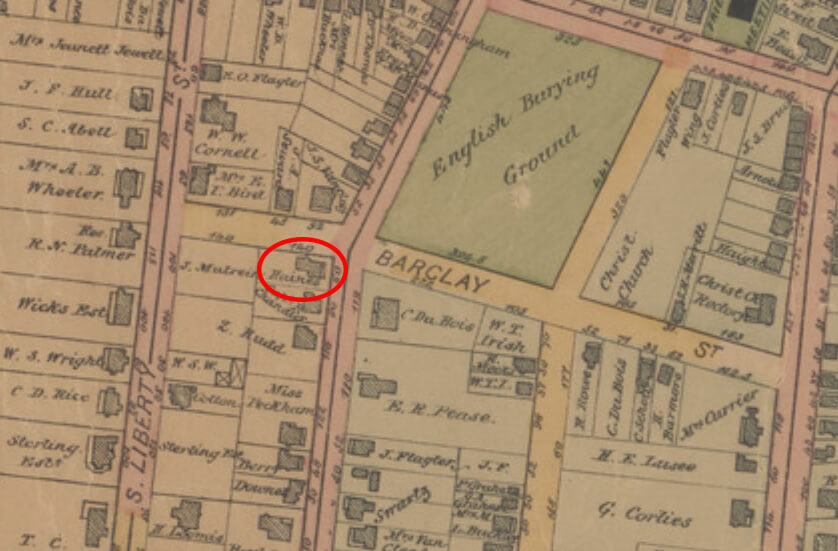
When Hull purchased the house sometime before 1892 it was by no means new, but it did have a recent renovation. First built circa 1859 according to the Academy Street National Historic District designation report, it was one of a number of houses constructed in what the report describes as the first planned neighborhood in Poughkeepsie. Around 1881 the modest house on a corner lot was given a makeover, with a wide porch, dramatic horseshoe window and rear addition. On an 1885 map of the city, the house is shown at its current size and labeled as the property of Haines.
J. Frank Hull started in the clothing business in the late 1870s, manufacturing overalls and trousers with a partner in the firm Lasher & Hull. He began Hull & Co. around 1897 and in 1901 changed the business name to the Dutchess Manufacturing Company. The name change may have been a nod to the company’s most popular product, the Dutchess Trouser. Dutchess Trousers were work pants pitched as nearly indestructible. The advertising gimmick was “if a button comes off you get 10 cents, if they rip you get $1.00.” The sturdy apparel was also available in a knickerbocker style for boys.
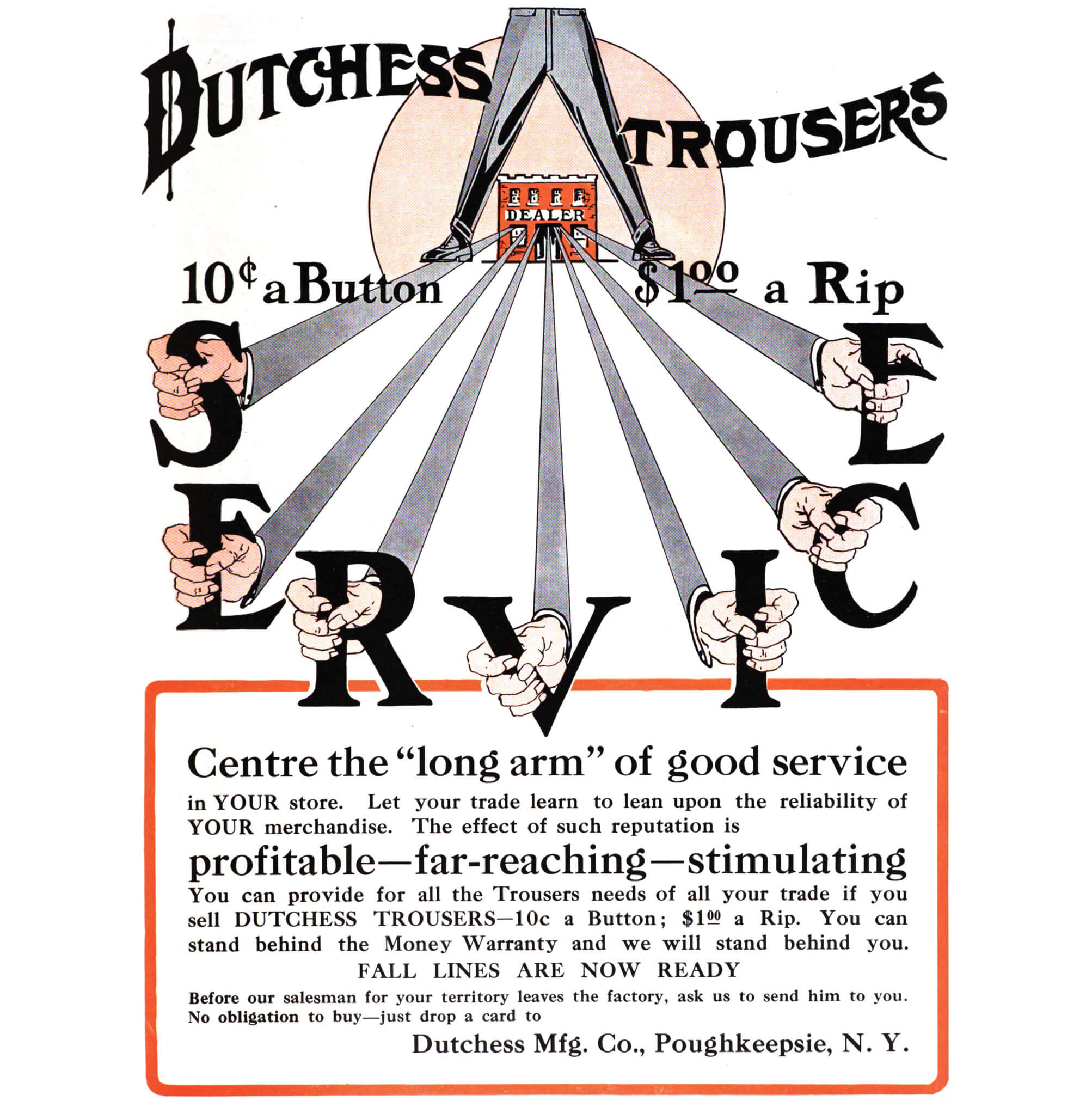
The company had its headquarters in downtown Poughkeepsie and Hull lived within easy distance. He was a widower with a young daughter when he purchased 112 Academy Street. In December of 1894, he remarried and Carrie Gibson Hull, a former stenographer at the company, joined him on Academy Street.
The house became a mayoral residence in 1896 when Hull was elected and served a single term. An article in The World credited his campaign success to the 200 “factory girls” from the Dutchess Manufacturing Company who advocated for him despite, as the newspaper acknowledged, the fact that they themselves couldn’t vote.
The mayoral residence on Academy Street suffered some damage in 1897 according to the same newspaper. When relaxing in his library after dinner, Hull lit a cigar and tossed the match into a wastepaper basket. He left the room to head to his factory and “within ten minutes the costly furnishings of his library were in flames and the fire had spread to the parlor and other rooms.” Thankfully the paper reported that an unnamed maid spotted the fire and neighbors in the “most fashionable part of the city” fought the blaze until the fire department came to the rescue. According to the paper, the house was saved, but the entire lower floor was gutted.
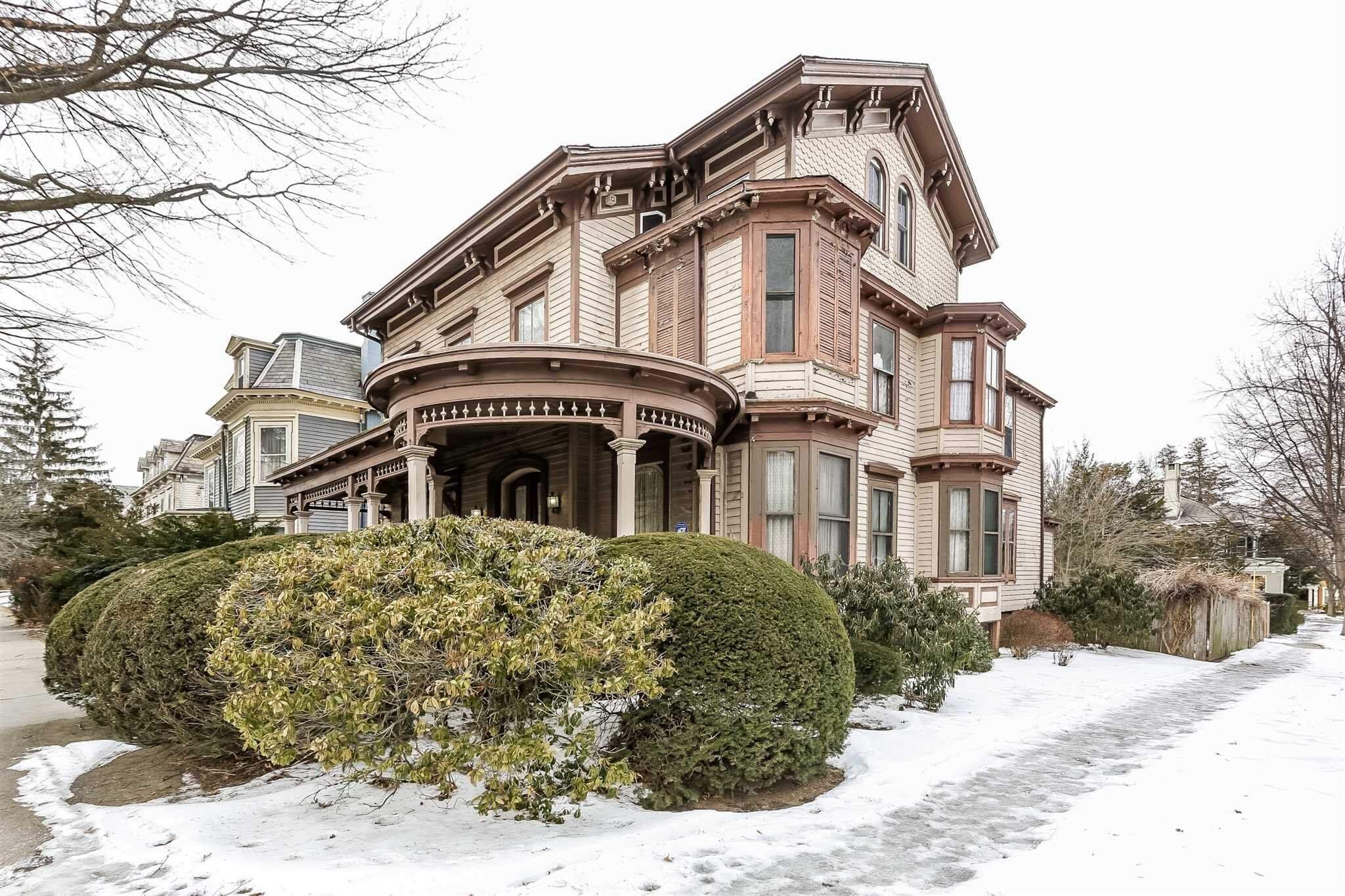
The couple apparently chose to repair the damage and return to the house as they continue to be listed on Academy Street in newspaper articles and in the 1900 census. That year they were living in the house with Hull’s daughter Ruth from his first marriage, an infant son, a nurse, a cook and two servants. J. Frank and Carrie would have two more sons together before he died suddenly at the age of 58 following an appendectomy in 1907.
A well-respected businessman, The Evening Enterprise splashed “Whole City Honors Ex-Mayor J. Frank Hull” across the front page in reporting on his funeral. Downtown shops were closed for several hours out of respect and so fellow business owners could attend the afternoon funeral at the Second Reformed Church. Earlier in the day, mourners had filed into the Hull home with the paper reporting that “the remains were viewed by hundreds of callers at the house, 112 Academy Street, where the parlor was filled with flowers.”
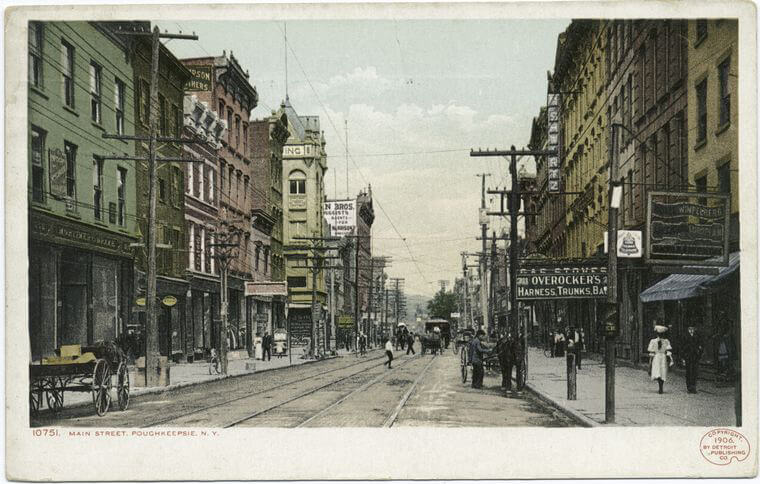
After his death, Carrie G. Hull carried on in the business. An announcement in the July 24, 1907 issue of Men’s Wear, no doubt meant to assuage the industry that the company was in capable hands, listed Carrie as a new vice president and lauded her as having a “well known business capacity.” Around 1910 she was named president, a role she served until her death in 1933.
She seems to have gained a fair bit of attention in what was considered an unusual role as the president of a company producing menswear. In 1921 articles that ran in papers across the country with headlines like “Woman Makes Trousers” and “Woman Runs Big Trouser Factory,” Carrie Hull was celebrated as the President of the Dutchess Manufacturing Company and shared her thoughts about women in business. At the time, papers reported that the company had 800 employees and 75 percent of those were women. Of those 64 percent were in management positions as superintendents or “foremen.” She was described as “progressive in her business administration as she is in her community ideas” with programs to provide country outings for employees and opportunities for female employees to attend lectures at Vassar. Some versions of the article were shortened to focus on the advice of “women remaining womanly” even if they were in business.
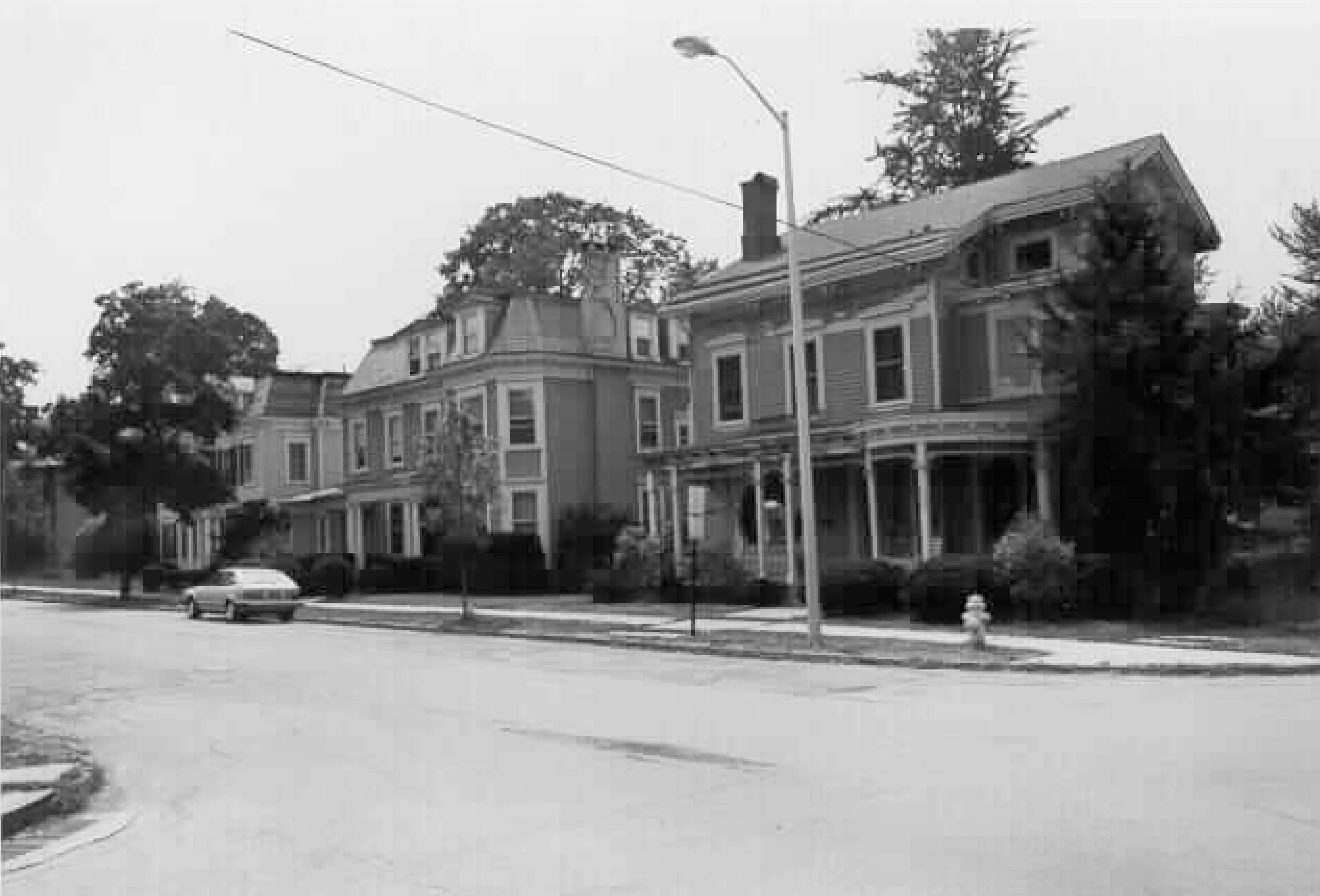
While segueing into her new role at the business, Carrie stayed at 112 Academy Street with her young sons and stepdaughter for several years after her husband’s death. In 1911 the house was the center of another family moment, this time a much happier one. Stepdaughter Ruth Hull held her wedding in the house, which had been transformed into “a bower of flowers” for the occasion according to the Evening Enterprise. The chosen theme was pink and white with tulips, azaleas and lilies adorning the interior. The ceremony was held in the library “before a bank of Easter lilies and palms,” while the porch was “enclosed in canvas, lighted with electric bulbs, decorated with palms and furnished with rugs” so that it resembled a room.
Carrie continues to appear as living at 112 Academy Street through at least 1914 with newspaper articles noting her hosting meetings of the Poughkeepsie Equal Suffrage League at the house. By 1915 Carrie had moved and the family of Frank L. Sweetser, a Dutchess Manufacturing Company employee, was in residence.
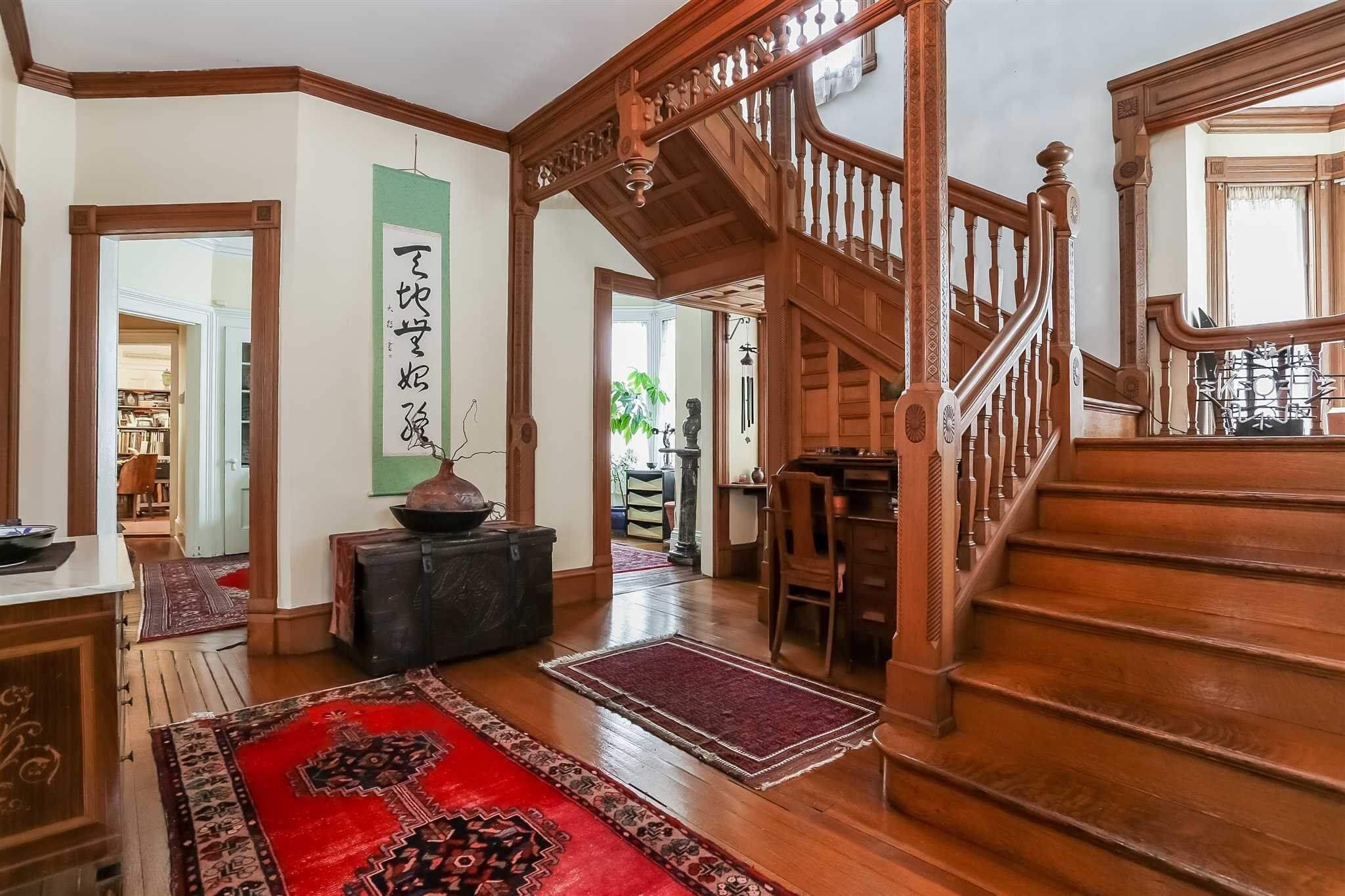
The tales of just one family lend a fascinating backstory to the house and the interior details certainly live up to the colorful stories. There are dramatic doorways, fretwork, a grand staircase and multiple mantels.
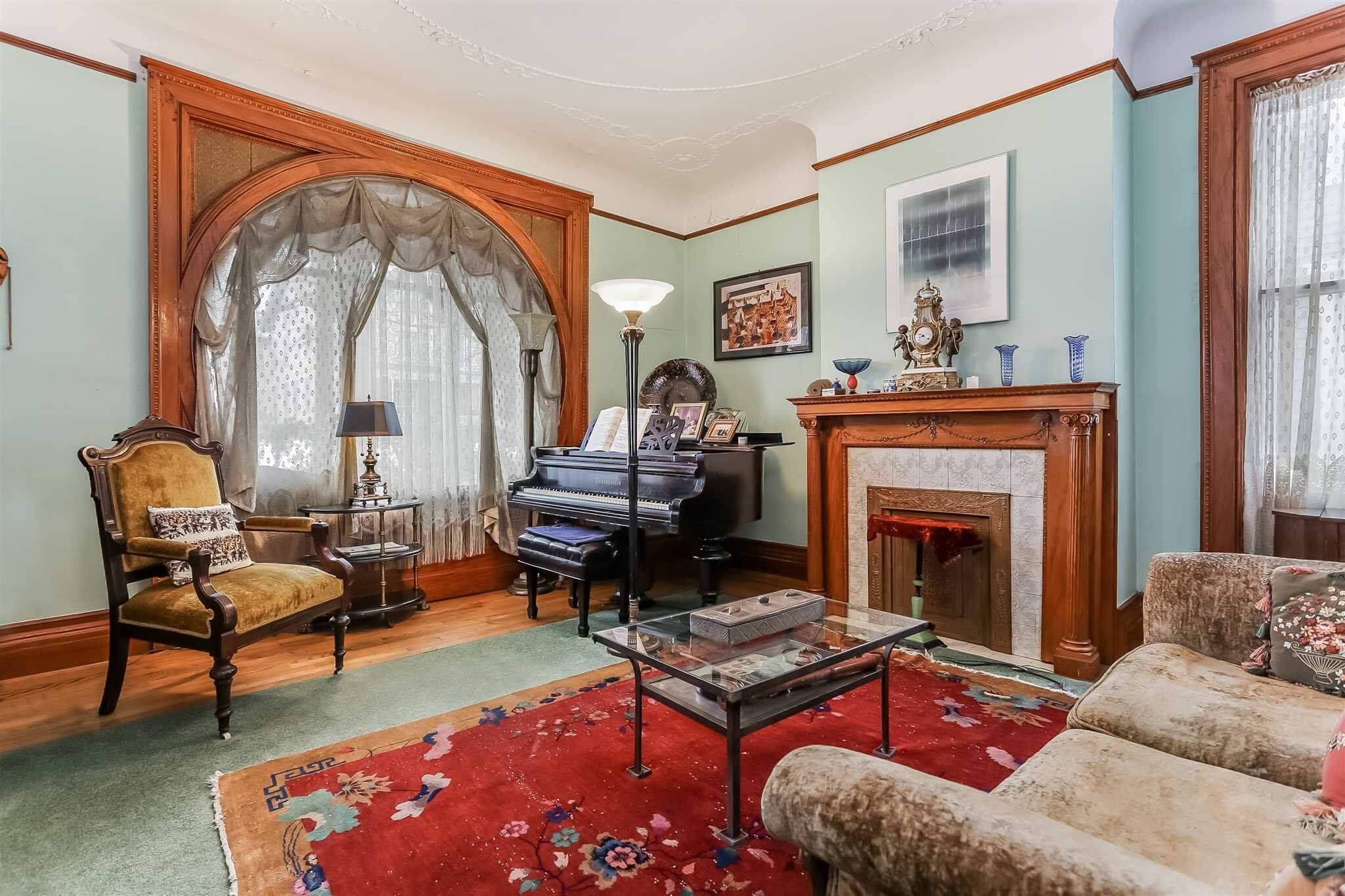
If the 1897 newspaper article is accurate, fire gutted the first floor in 1897 and so the ornamental details would post-date that time. Stylistically this makes sense as the house has some colonial revival ornament that would have been popular at the time. Ceilings in the parlor have a delicate ribbon detail in the plaster ceiling, the wood mantel has columns and swags and there’s egg and dart molding around the doors and windows.
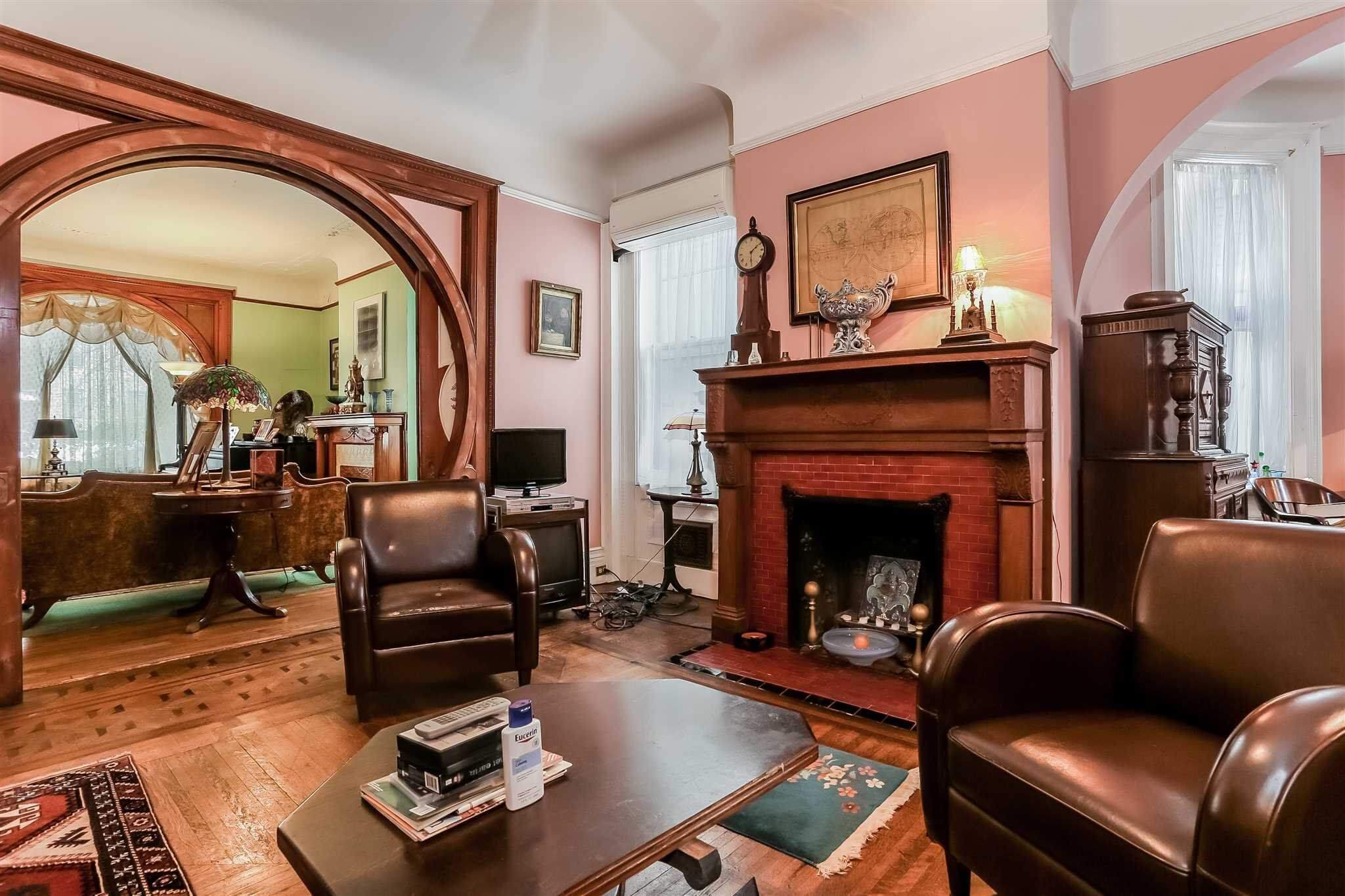
The horseshoe window of the exterior is echoed in these fairly fabulous pocket doors.
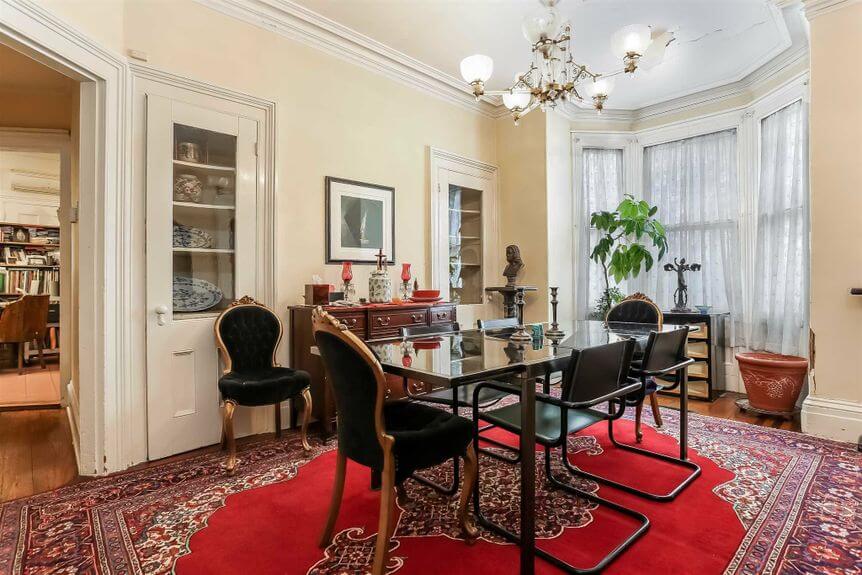
There’s a dining room with built-ins and a bay window. The ceiling in this room and some others is sporting some popping paint, which could be a sign of some water issues.
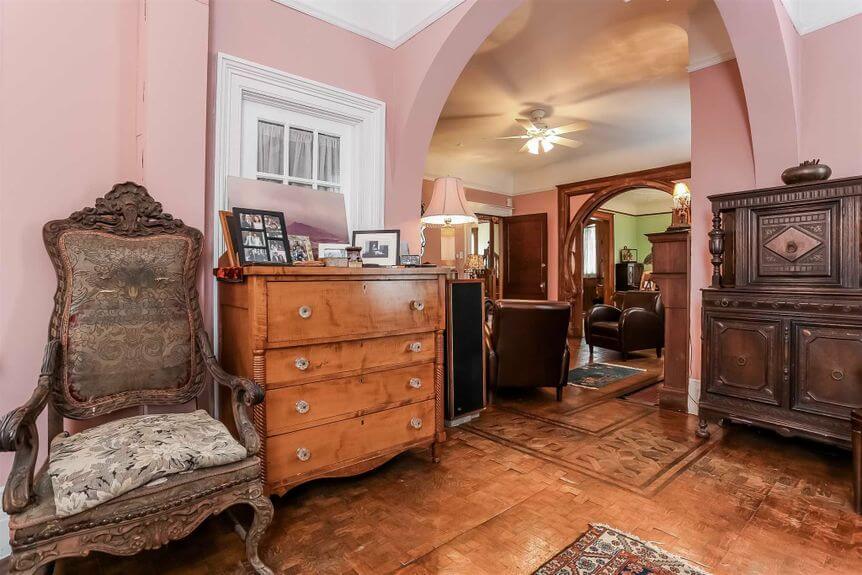
While there are plenty of listing photos of the unusual details of the first floor spaces, there isn’t a shot of the kitchen, so whether it showcases any vintage character is unknown.
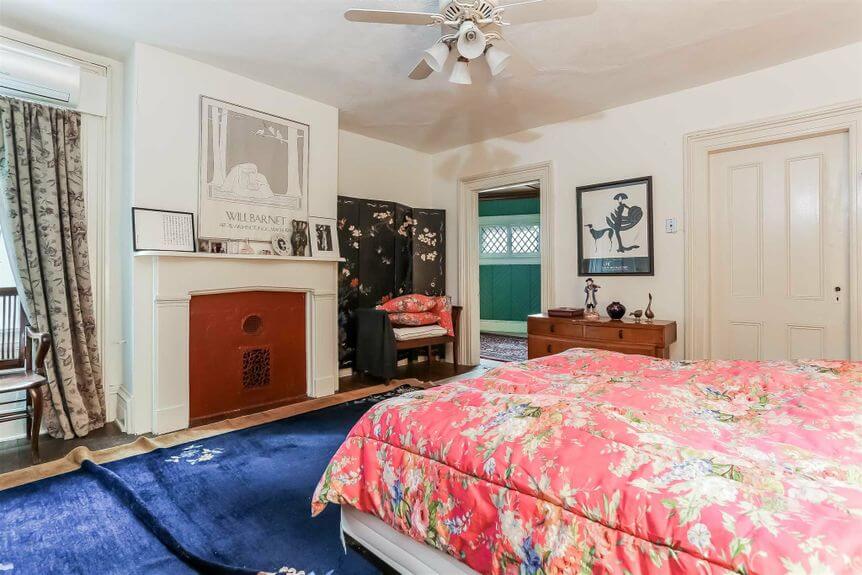
There are six bedrooms in the house and at least two of those pictured have fireplaces. The listing doesn’t state if they are in working condition.
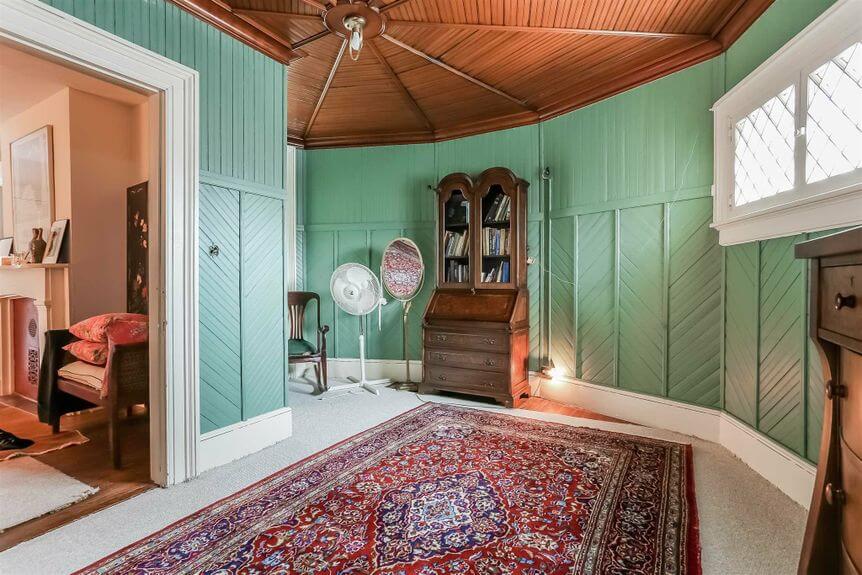
Off what is presumed to be the master is a striking space covered floor to ceiling in slat paneling, making for an unusual dressing room.
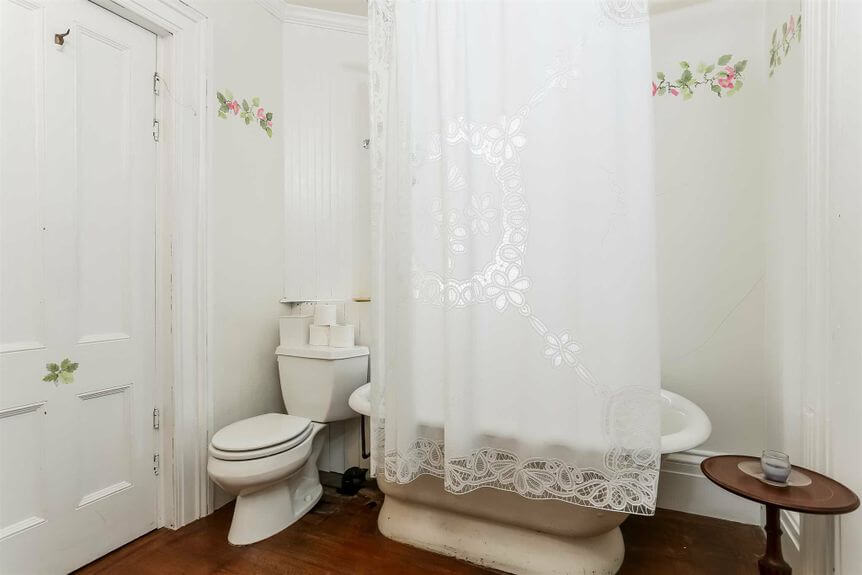
There are 3.5 baths and of the two pictured, one appears to have been thoroughly modernized and one retains a vintage tub.
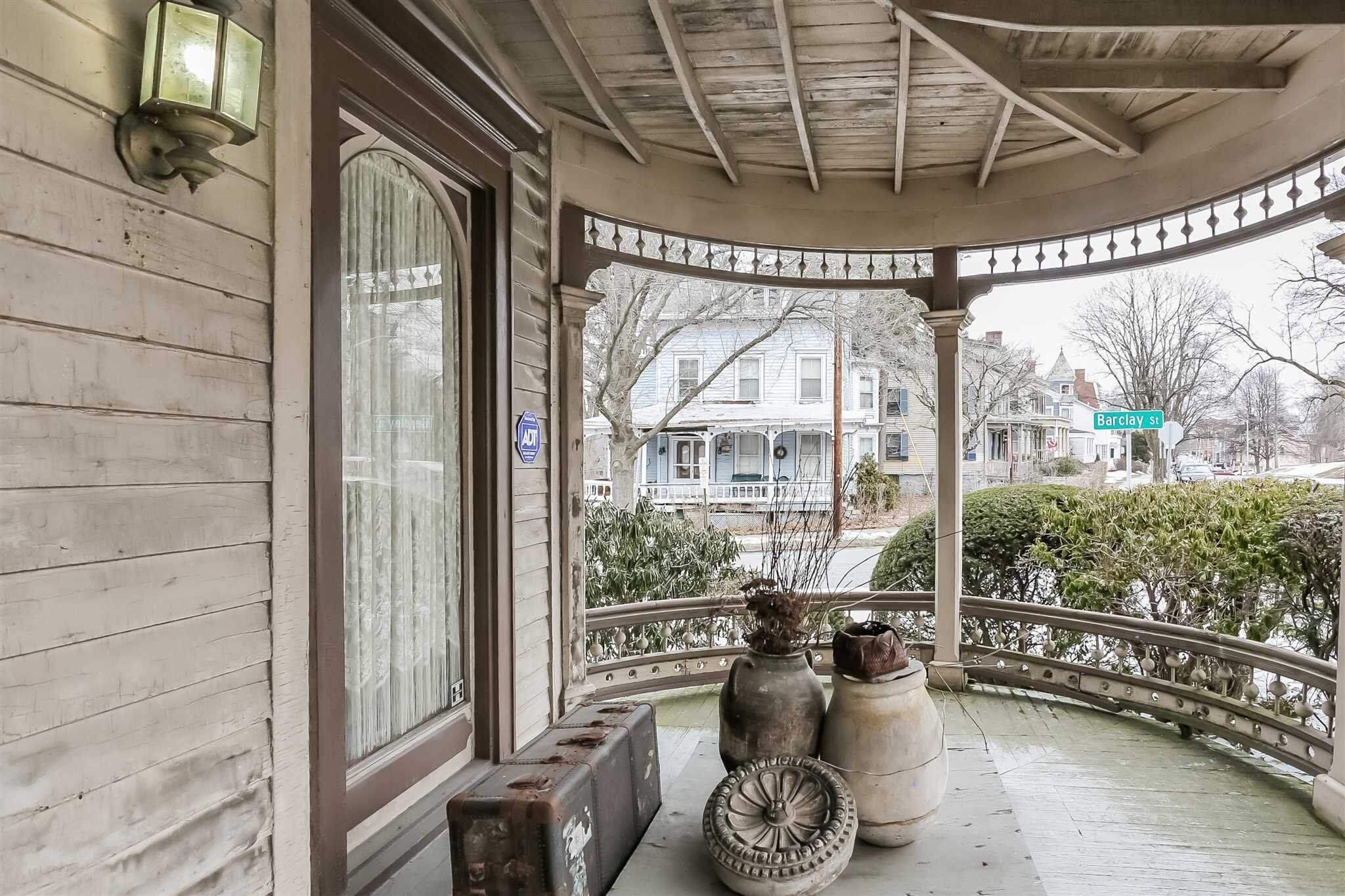
Outside the house retains the porch that was transformed for Ruth Hull’s flower-filled 1911 wedding. Today, the porch is a perfect vantage point from which to admire the surrounding architecture.
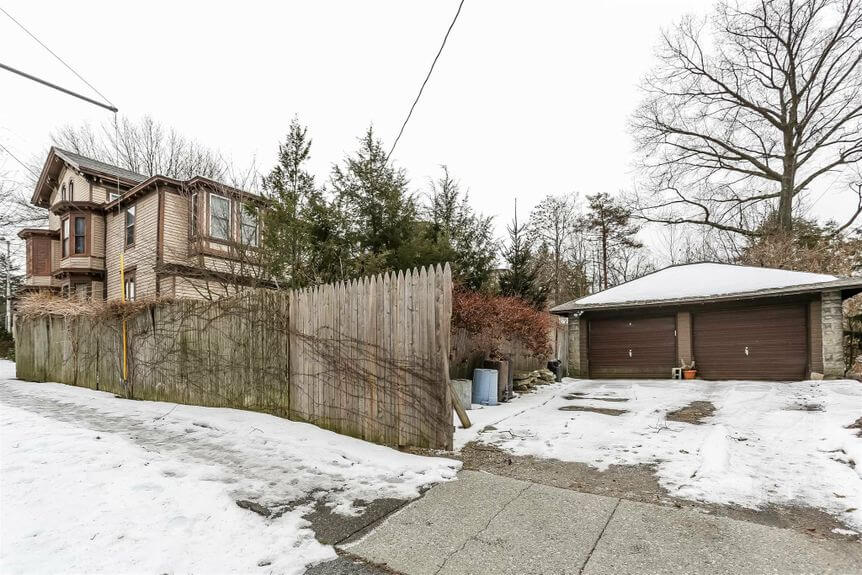
Behind the house are a yard and a detached two-car garage. If you want to leave your car at home the house is just a few blocks from the Barrett Art Center with exhibitions, classes and special events. It’s a longer walk, but the Walkway over the Hudson State Historic Park is about 1.5 miles away. The 1.28-mile-long elevated pedestrian bridge spans the Hudson River and provides spectacular views of the river and surrounding towns. For trips into Manhattan, the Poughkeepsie train station with MetroNorth service is just over a mile away from the house.
The house is listed for $530,000 by Agatha Pon of Houlihan Lawrence.
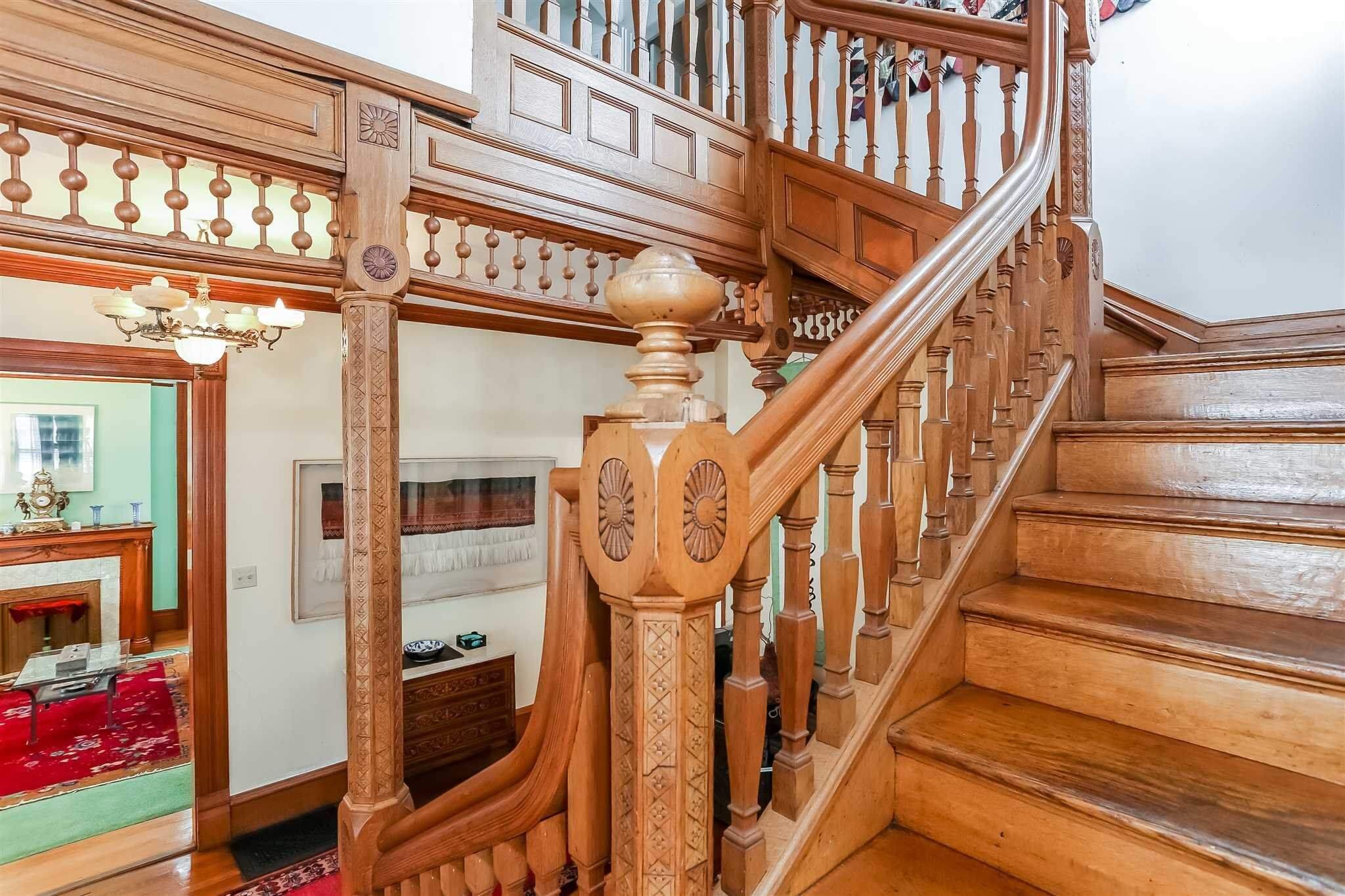
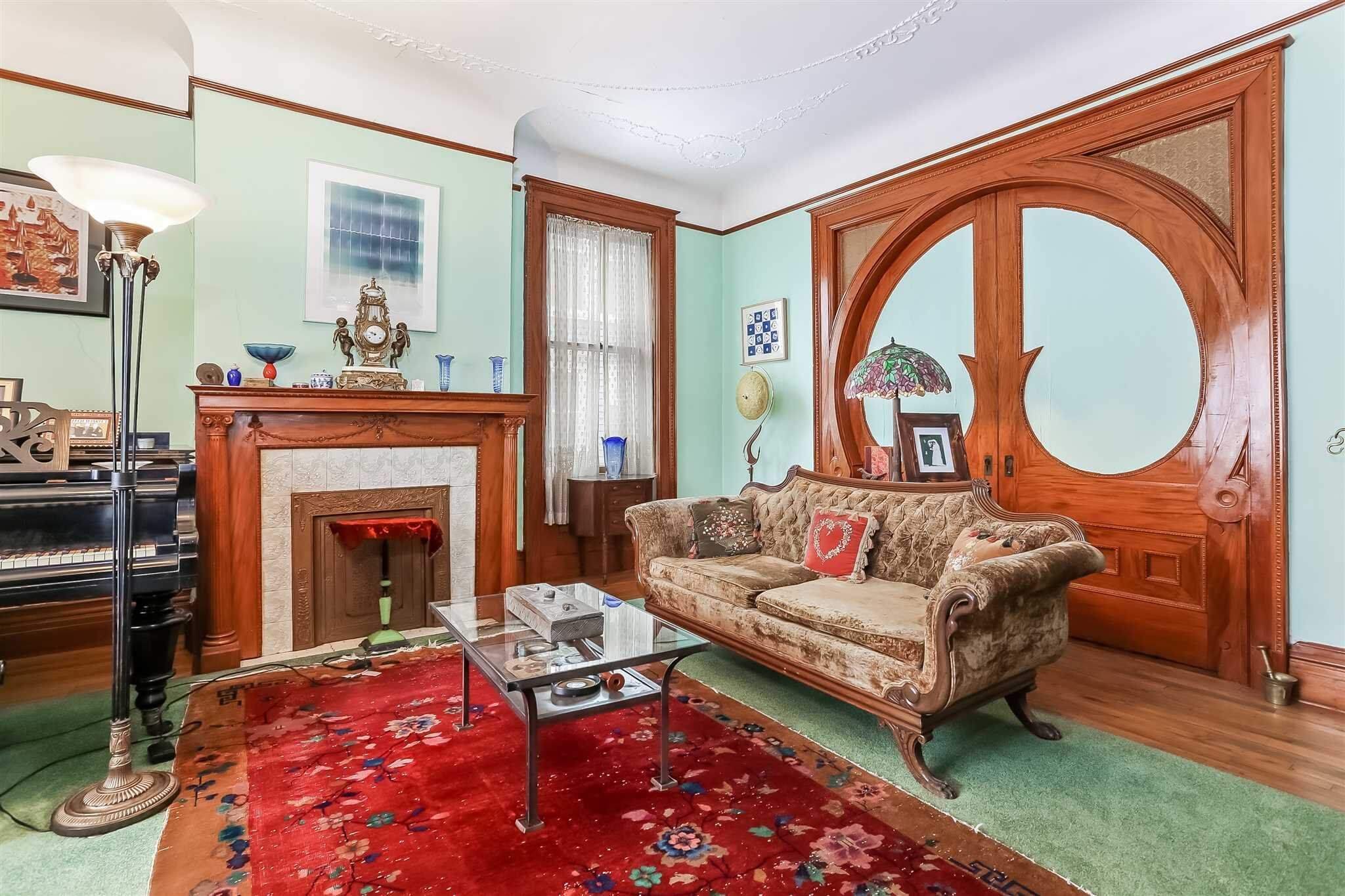
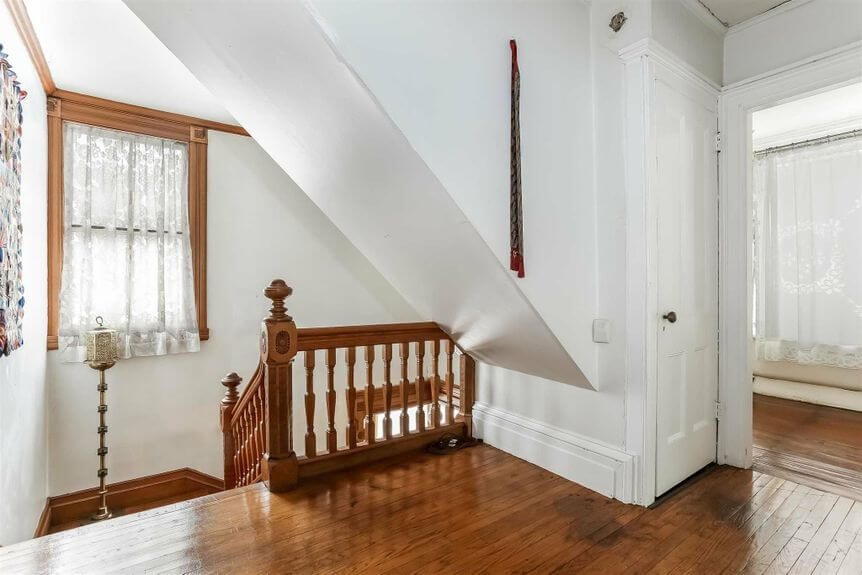
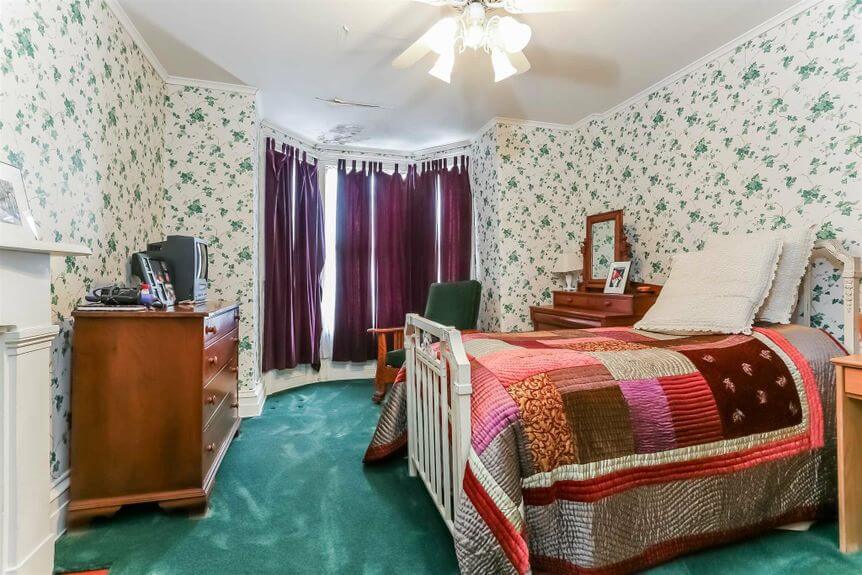
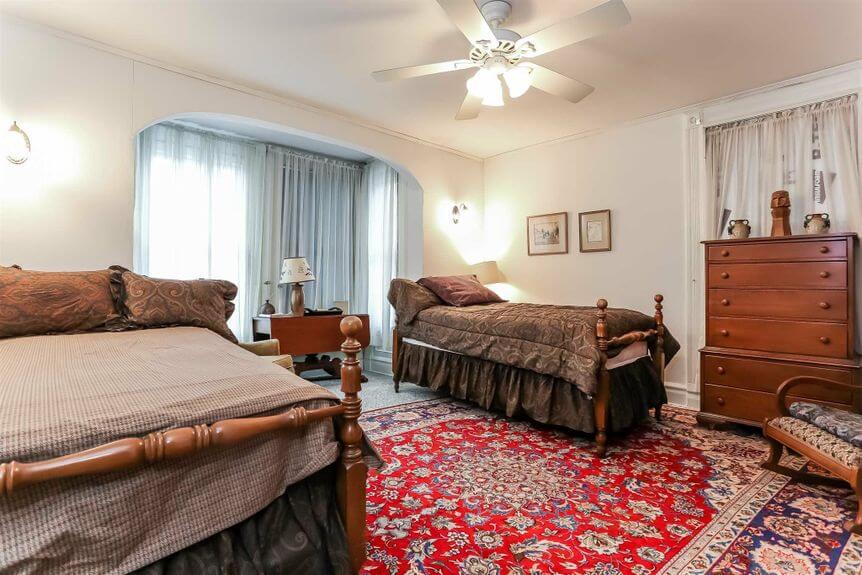

Related Stories
- An Irvington Gatehouse Escapes Demolition and Becomes the Home of Artist Charles Sheeler
- The A.J. Davis-Designed Country Retreat of a Former Pierrepont Brooklynite and Attorney General
- A Gothic Crow’s Nest With Some Gilded Age Glamour in Bronxville
Email tips@brownstoner.com with further comments, questions or tips. Follow Brownstoner on Twitter and Instagram, and like us on Facebook.

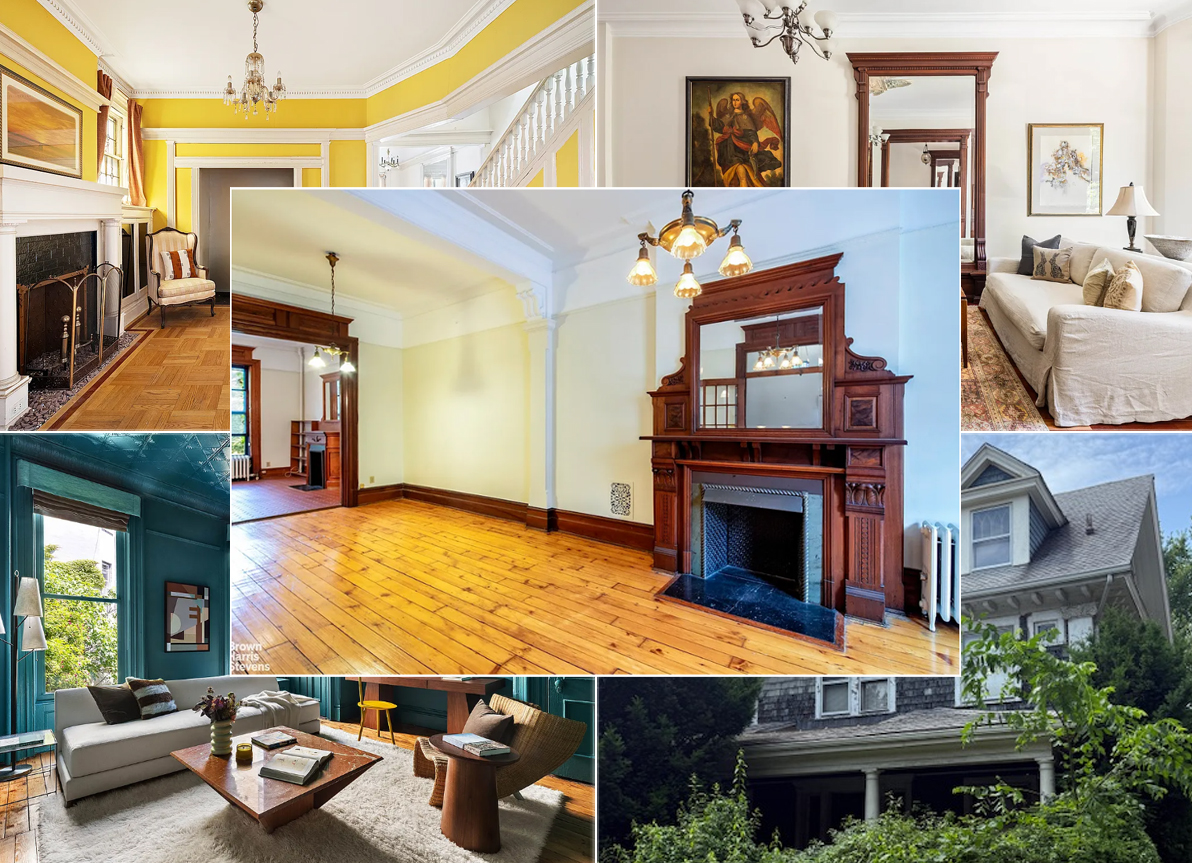



What's Your Take? Leave a Comment